Intel Core i7-10700 vs Core i7-10700K Review: Is 65W Comet Lake an Option?
by Dr. Ian Cutress on January 21, 2021 10:30 AM EST- Posted in
- CPUs
- Intel
- Core i7
- Z490
- 10th Gen Core
- Comet Lake
- i7-10700K
- i7-10700
CPU Tests: Legacy and Web
In order to gather data to compare with older benchmarks, we are still keeping a number of tests under our ‘legacy’ section. This includes all the former major versions of CineBench (R15, R11.5, R10) as well as x264 HD 3.0 and the first very naïve version of 3DPM v2.1. We won’t be transferring the data over from the old testing into Bench, otherwise it would be populated with 200 CPUs with only one data point, so it will fill up as we test more CPUs like the others.
The other section here is our web tests.
Web Tests: Kraken, Octane, and Speedometer
Benchmarking using web tools is always a bit difficult. Browsers change almost daily, and the way the web is used changes even quicker. While there is some scope for advanced computational based benchmarks, most users care about responsiveness, which requires a strong back-end to work quickly to provide on the front-end. The benchmarks we chose for our web tests are essentially industry standards – at least once upon a time.
It should be noted that for each test, the browser is closed and re-opened a new with a fresh cache. We use a fixed Chromium version for our tests with the update capabilities removed to ensure consistency.
Mozilla Kraken 1.1
Kraken is a 2010 benchmark from Mozilla and does a series of JavaScript tests. These tests are a little more involved than previous tests, looking at artificial intelligence, audio manipulation, image manipulation, json parsing, and cryptographic functions. The benchmark starts with an initial download of data for the audio and imaging, and then runs through 10 times giving a timed result.
We loop through the 10-run test four times (so that’s a total of 40 runs), and average the four end-results. The result is given as time to complete the test, and we’re reaching a slow asymptotic limit with regards the highest IPC processors.

Google Octane 2.0
Our second test is also JavaScript based, but uses a lot more variation of newer JS techniques, such as object-oriented programming, kernel simulation, object creation/destruction, garbage collection, array manipulations, compiler latency and code execution.
Octane was developed after the discontinuation of other tests, with the goal of being more web-like than previous tests. It has been a popular benchmark, making it an obvious target for optimizations in the JavaScript engines. Ultimately it was retired in early 2017 due to this, although it is still widely used as a tool to determine general CPU performance in a number of web tasks.
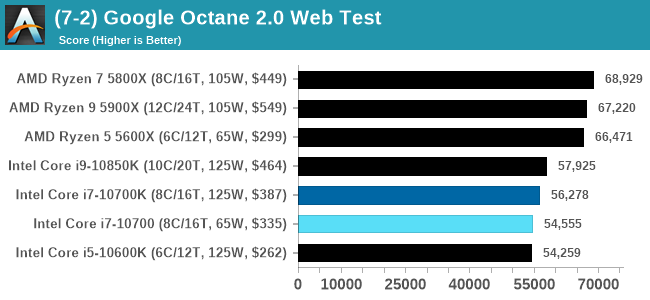
Speedometer 2: JavaScript Frameworks
Our newest web test is Speedometer 2, which is a test over a series of JavaScript frameworks to do three simple things: built a list, enable each item in the list, and remove the list. All the frameworks implement the same visual cues, but obviously apply them from different coding angles.
Our test goes through the list of frameworks, and produces a final score indicative of ‘rpm’, one of the benchmarks internal metrics.
We repeat over the benchmark for a dozen loops, taking the average of the last five.
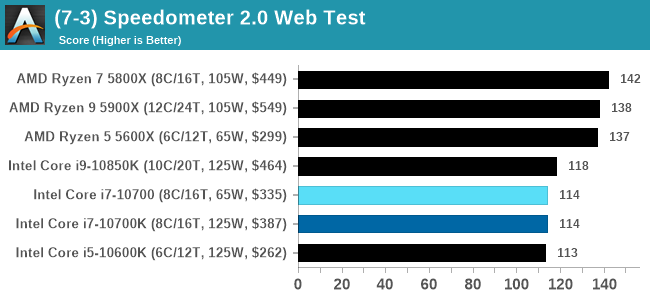
Legacy Tests
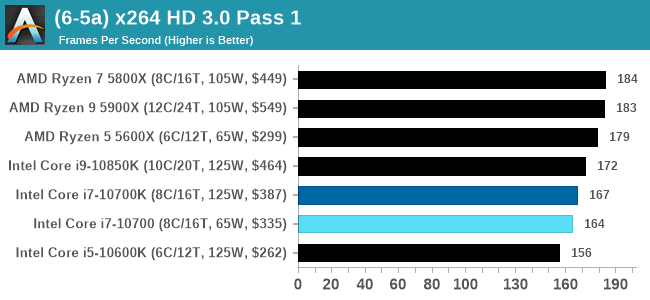
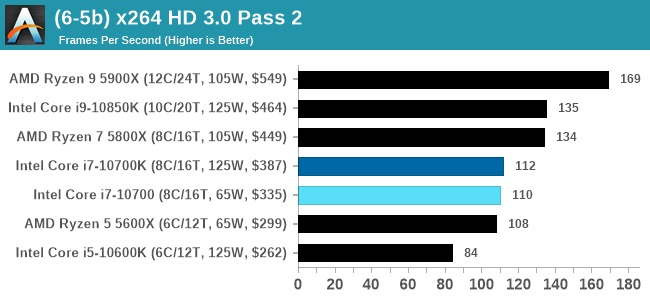
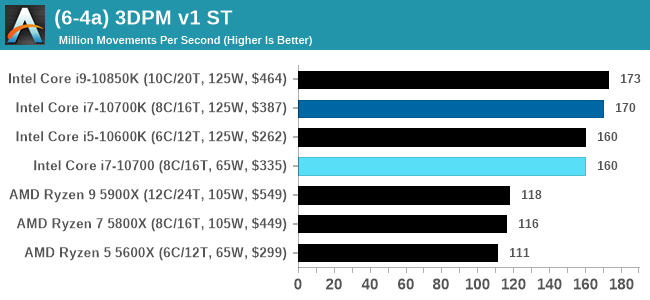
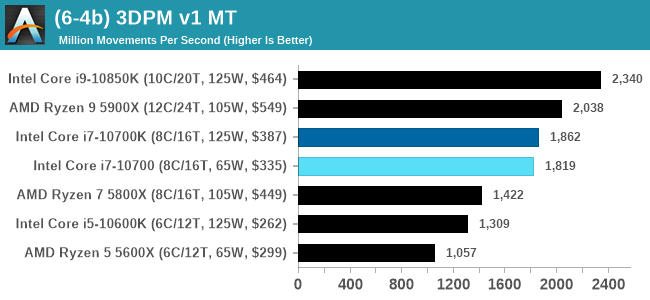
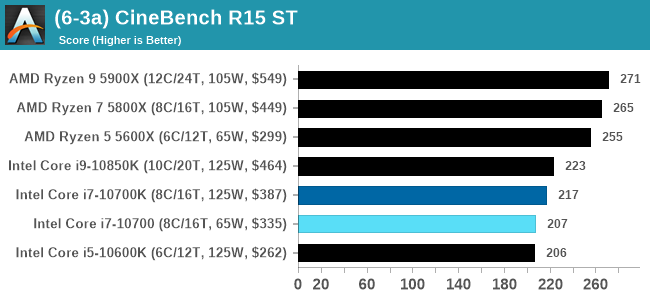
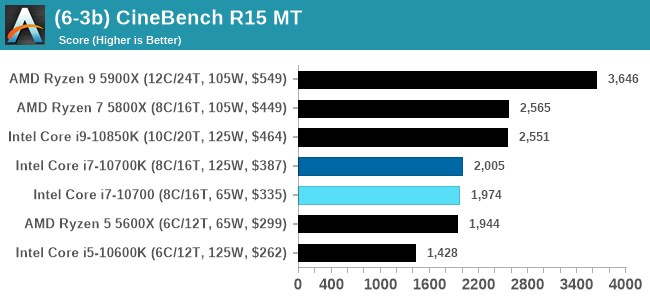


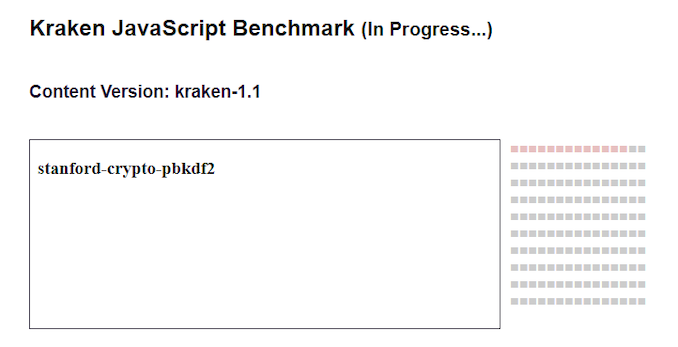
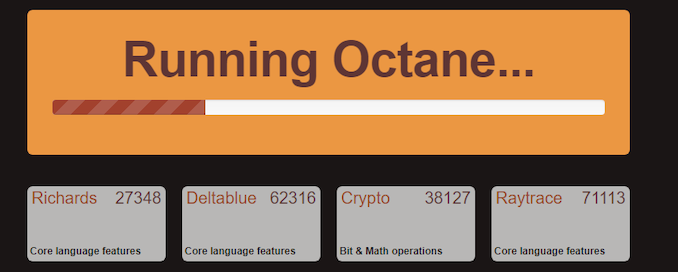
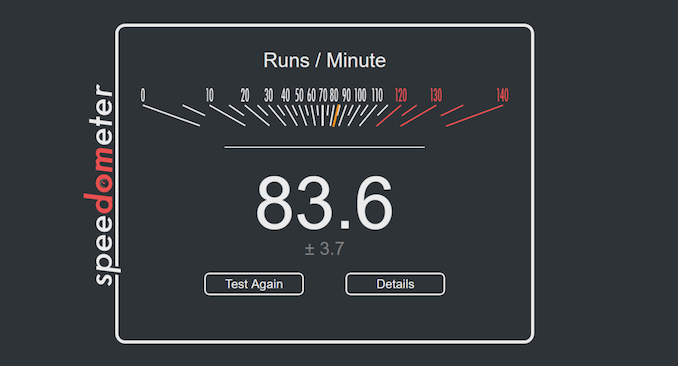








210 Comments
View All Comments
blckgrffn - Thursday, January 21, 2021 - link
Thanks for the review, as it basically shows what other reviews already show, namely if you set aggressive PL1 and PL2 values across K & non K SKUs then you'll get similar performance.I am curious why you said the performance is much lower with a 65W power limit and then didn't include those results.
I feel like it is common knowledge, especially with 10th Gen Intel CPUs that you need to manually configure PL1 and PL2 in keeping with your cooling solution, but perhaps not.
blckgrffn - Thursday, January 21, 2021 - link
I mean, published PL1 for this CPU is 10700 is 65, PL2 is 224 for 28 seconds.Running outside of those value is essentially turbo overclocking (yeah, I know Intel has also redefined that term).
If your motherboard auto overclocks the CPU via a ridiculous PL1 value then ¯\_(ツ)_/¯
Tunnah - Thursday, January 21, 2021 - link
Intel has no incentive to change their policy and label their products with the actual power draw they'll be using because they'll show how much more they suck up compared to AMD. People are constantly looking for metrics to compare the 2 "teams", and Intel getting to keep the labels of 65w and 125w lets the fans say "see it has the same power usage as AMD!"yeeeeman - Thursday, January 21, 2021 - link
this looks just fine to me as long as it is clear for the user.magreen - Friday, January 22, 2021 - link
But it is not.porina - Thursday, January 21, 2021 - link
From my observations of Zen 2 at stock operation, 65W TDP models tended to sit continuously at the 88W PPT limit under most all-core load conditions. Has this changed with Zen 3? Do they not hit 88W so easily, or is another (current) limiter taking over? Or is the limit a different value now?Smell This - Friday, January 22, 2021 - link
Presumably, the Zen3 would operate under the same 'constraints' ----- The constraints are as follows:
♦ Package Power Tracking (PPT): The power threshold that is allowed to be delivered to the socket. This is 88W for 65W TDP processors, and 142W for 105W TDP processors.
♦ Thermal Design Current (TDC): The maximum amount of current delivered by the motherboard’s voltage regulators when under thermally constrained scenarios (high temperatures). This is 60A for 65W TDP processors, and 95A for 105W TDP processors.
♦ Electrical Design Current (EDC): This is the maximum amount of current at any instantaneous short period of time that can be delivered by the motherboard’s voltage regulators. This is 90A for 65W TDP processors, and 140A for 105W TDP processors.
"Looking at the total power consumption of the new 3700X, the chip is very much seemingly hitting and maintaining the 88W PPT limitations of the default settings, and we’re measuring 90W peak consumption across the package."
Olaf van der Spek - Thursday, January 21, 2021 - link
Why would one want to limit turbo budgets? Thermals? If there's no thermal headroom the CPU won't turbo (as far).Efficiency?
Calin - Friday, January 22, 2021 - link
The motherboard has power limits - both in instant maximum current from the voltage regulation phase (remember, the mainboard receives 3.3 Volts, 5V, 12V and maybe -5V and -12V from the PSU and has to convert that to processor voltage), and in cooling capacity for the VRM (Voltage Regulation Module).Regardless of the power limits, the processor will slow down if its internal temperature is too great.
So yes, the "my mainboard's power delivery module cannot deliver more than 80 amps" is a possible reason. Another would be "My case has bad cooling and I want to keep the processor colder". Another would be "As soon as the sustained power goes over 140 watts, the fans in the case start whirring and I hate the sound".
DominionSeraph - Thursday, January 21, 2021 - link
>This does come with a reasonably good default cooler.No. Just no. The Ryzen coolers are utter trash and you're doing a disservice to your readers who may not have ever had a quiet cooler to say otherwise. I build PCs and I've had several Ryzens go through and I have never seen one where I would call the acoustics livable. My first sale was a 1700 with the stock cooler since I didn't have any other AM4 compatible ones at the time and I still feel bad about selling it that way. It was just terrible. The 212 EVO seems to be within its thermal envelope for quiet cooling up to a stock 3700X, so I'd highly recommend one of those over the stock cooler. Going above the ~85W of a 3700X you should spring for a Fuma 2.